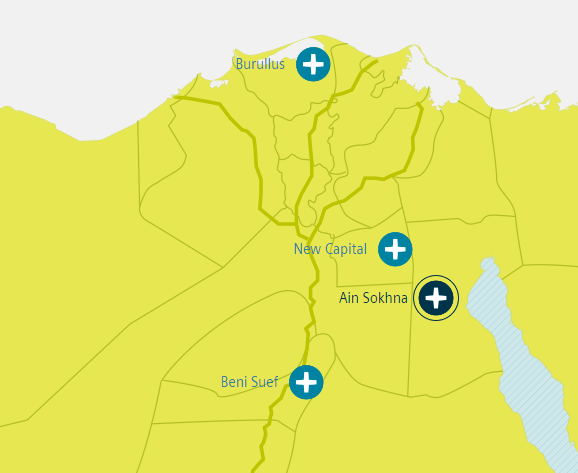Siemens Completes Egypt Mega-Project
The world’s largest project of multiple gas-fired combined cycle power plants (CCGTs) has been completed in record time, said Siemens July 25.
The three complexes each add 4.8 gigawatts (GW) of generation capacity to Egypt's national grid, for a total of 14.4 GW which the German turbine-maker says will save Egypt over $1bn/yr in fuel costs.
Siemens, with its Egyptian consortium partners, Orascom Construction and Elsewedy Electric, announced completion of their ‘Egypt mega-project” in record time, with commissioning and the start of operations at the Beni Suef, Burullus and New Capital CCGTs. Although the statement was dated July 24, Siemens did not release it widely until July 25.
It said that the mega-project set a new world record for execution of modern, fast-track power projects, delivering 14.4 GW of power in only 27.5 months, adding that typically a 1.2 GW CCGT takes 30 months to build. In this case, Siemens built 12 such blocks in parallel in record time. Siemens also said the three plants reached a total net electrical efficiency of over 61%.
The project is the result of a €8bn (then $9bn) order signed by the Egyptian government in June 2015 with Siemens and its partners. NGW on July 24 asked Siemens if the order had been completed and fulfilled within budget; it has yet to receive a reply to the budget question. Later July 25, Siemens responded to NGW to say that the CCGTs had been fulfilled within budget, but said the €8bn contract also included installation of wind turbines by Siemens Gamesa in the Red Sea; it declined to break down the contract between the separate wind and much larger CCGTs components.
Siemens CEO Joe Kaeser said: "We look forward to applying this unique performance model also to other countries in their efforts towards reliable, affordable and sustainable power systems." He commended the role of the Egyptian president Abdel Fattah el-Sisi in the process.
The gas used in the new plants will be Egyptian-produced, and much of it will likely come from a single giant field, the Eni-operated Zohr field offshore the Nile Delta, now in ramp-up phase with – according to Eni last month -- the aim of reaching 2bn ft³/day by end-2018, and a production plateau of 2.7bn ft³/d (27.9bn m3/yr) by the end of 2019.
Prior to the discovery of Zohr and the contract award to Siemens, Egypt was contemplating a future of new coal-fired plants, and a long-term reliance on LNG imports for part of its gas requirements. Now, LNG imports may be phased out and instead the country has the potential in the 2020s to become an exporter of LNG, or at least a processor through its liquefaction units of third-party eastern Mediterranean gas.
Egypt’s electricity minister Mohamed Shaker said the new CCGT complexes were built in select locations across the country to serve the growing demand for electricity among households, businesses and industries and would “serve as the backbone for economic prosperity in Egypt for years to come."
To improve the grid’s resilience, Siemens has energised six substations that will transmit electricity generated by the new power plants and trained up 600 Egyptian engineers and technicians.

The three sites in light blue show the three giant CCGT complexes; Siemens is also building a windfarm complex on the Red Sea coast at Ain Sokhna (Map and banner photo credit: Siemens)



